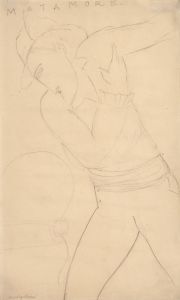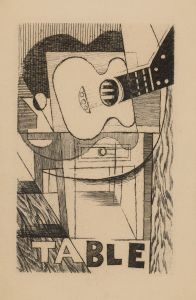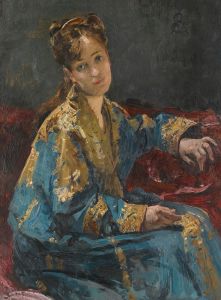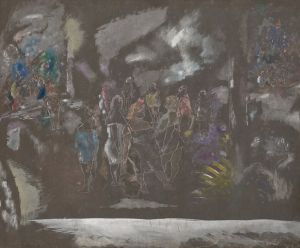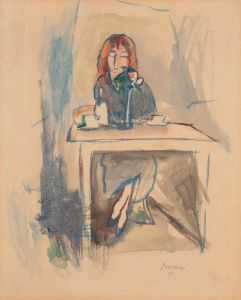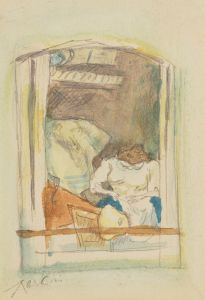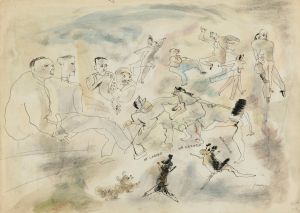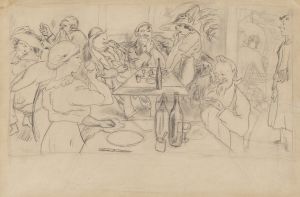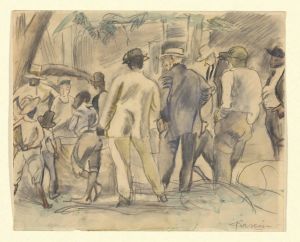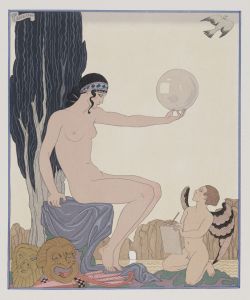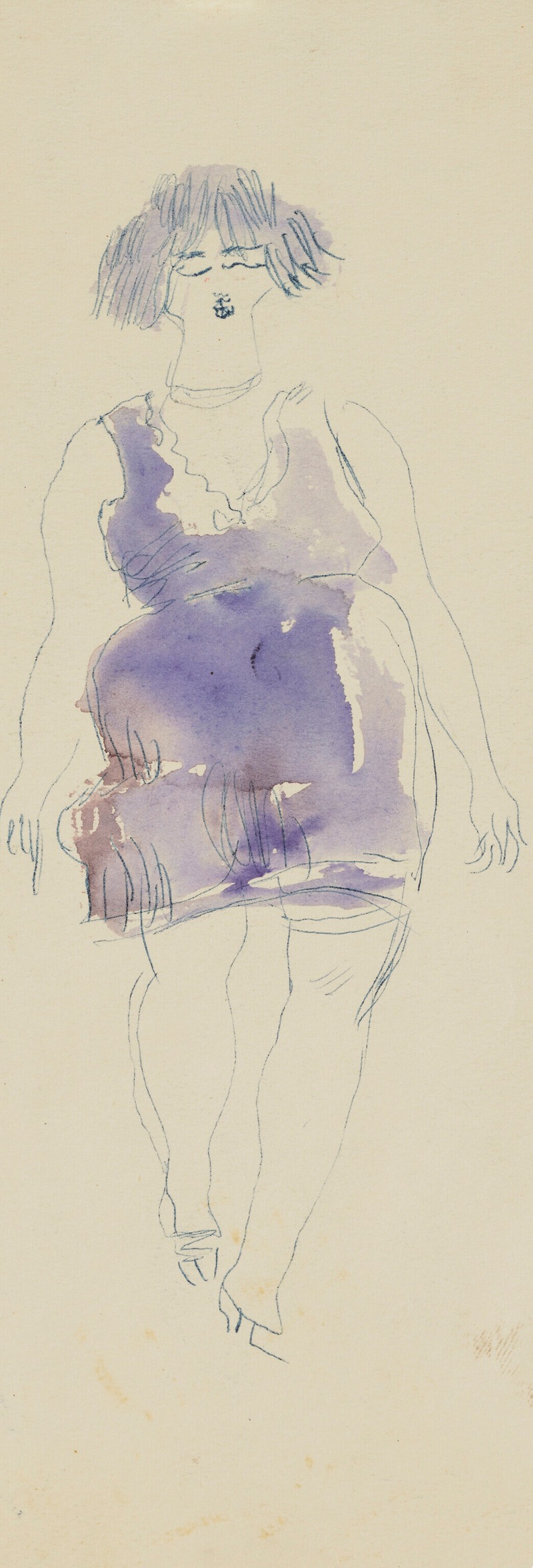
Femme à la robe bleue
A hand-painted replica of Jules Pascin’s masterpiece Femme à la robe bleue, meticulously crafted by professional artists to capture the true essence of the original. Each piece is created with museum-quality canvas and rare mineral pigments, carefully painted by experienced artists with delicate brushstrokes and rich, layered colors to perfectly recreate the texture of the original artwork. Unlike machine-printed reproductions, this hand-painted version brings the painting to life, infused with the artist’s emotions and skill in every stroke. Whether for personal collection or home decoration, it instantly elevates the artistic atmosphere of any space.
Jules Pascin, a Bulgarian-born artist who became a prominent figure in the early 20th-century art world, is known for his distinctive style that blends elements of Impressionism, Expressionism, and Symbolism. Among his numerous works, Femme à la robe bleue (Woman in the Blue Dress) is one of his notable paintings, though specific details about its creation and history remain limited.
Pascin, often referred to as the "Prince of Montparnasse," was deeply influenced by his experiences in Paris, where he became part of the vibrant artistic community. His works frequently depict women, often in intimate or contemplative poses, reflecting his fascination with the human form and emotional depth. Femme à la robe bleue exemplifies this focus, portraying a woman dressed in a blue garment. The painting captures a sense of quiet introspection, a recurring theme in Pascin's oeuvre.
The artwork showcases Pascin's mastery of color and form. The blue dress, rendered with delicate brushstrokes, contrasts with the softer tones of the background, drawing attention to the subject. The composition emphasizes the figure's posture and expression, inviting viewers to interpret the mood and narrative of the scene. Pascin's ability to convey emotion through subtle details is evident in this piece, as in many of his portraits.
While Pascin's works were celebrated during his lifetime, his personal life was marked by struggles with depression and a sense of alienation. These struggles often found expression in his art, which oscillates between moments of joy and melancholy. Femme à la robe bleue can be seen as part of this broader context, reflecting the artist's sensitivity to the complexities of human emotion.
The exact date of creation for Femme à la robe bleue is not widely documented, nor is its current location or provenance. Like many of Pascin's works, it may have been part of private collections or exhibited in galleries during his lifetime. Pascin's untimely death in 1930 at the age of 45 left behind a legacy of over 1,000 paintings and drawings, many of which continue to be studied and appreciated for their artistic and historical significance.
In summary, Femme à la robe bleue is a testament to Jules Pascin's skill as a portraitist and his ability to capture the nuances of human emotion. While specific details about the painting remain scarce, it remains an important example of his contribution to modern art.





